AOC AGON AG274QZM (2023) Review
A Mini LED stunner, with stiff OLED competition
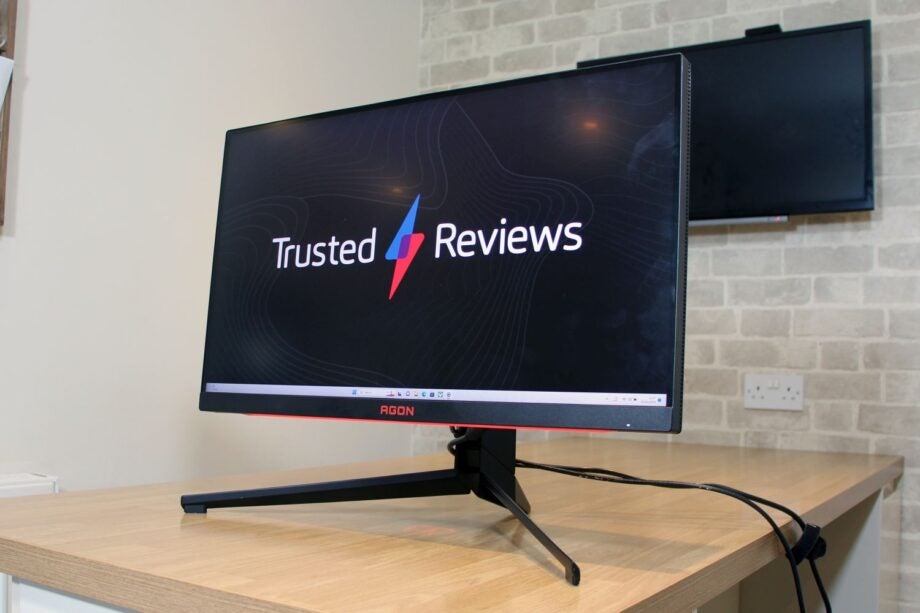

Verdict
The AOC AGON AG274QZM is an impressive monitor, with superb Mini LED image quality joined by great 240Hz motion performance and a dazzling array of features. There’s lots to like but, if you’re happy to spend this much on a gaming screen, you could find even better hardware elsewhere.
Pros
- Bright, bold and vibrant imagery
- Good HDR performance
- Lots of connectivity and adjustability
- Smooth, fast motion performance
Cons
- Very expensive
- OLED displays are better
- Heavy and bulky
Availability
- UKRRP: £999
- USARRP: $1099
- EuropeRRP: €1275
Key Features
- Superb Mini LED qualityCombine the Mini LED backlighting and IPS screen with a 1440p resolution and you’ve got a recipe for crisp, colourful gaming.
- 240Hz refresh rateThis fast-paced panel is ready for eSports thanks to superb motion performance and a 1ms response time.
- A bold, game-friendly designLoads of ports, a KVM switch and a headphone hook make this display ready for gaming, and it looks the part thanks to customisable RGB LEDs.
Introduction
If you’re going to drop four figures on a gaming monitor then you’re going to want a device that ticks every box – and the AOC AGON AG274QZM comes close.
The spec list will have gamers salivating: it’s Mini LED, runs at 240Hz and has a 1ms response time. It’s littered with RGB LEDs and even has a KVM switch for easy PC and console use.
At $1099/£999/€1275, though, the AOC is not cheap. That contrasts devices like the Samsung Odyssey G7 and MSI MPG Artymis 273CQRX-QD.
Those displays might not have every feature, but you’ll pay half as much – a far more palatable amount for most gamers, even ones evaluating our best gaming monitor guide.
Design and Features
- A fantastic, Mini LED-powered core specification
- Loads of ports and ample adjustability
- A large, bulky design with bold aesthetics
The AOC might be expensive, but it does deliver an IPS screen underpinned with Mini LED technology. It’s a move that ensures greater backlighting complexity than conventional hardware.
AOC’s display is a 27-inch panel with a 2560 x 1440 resolution, so you’ll get decent sharpness without taxing your graphics card – the new Nvidia GeForce RTX 4070 should be able to run things smoothly.
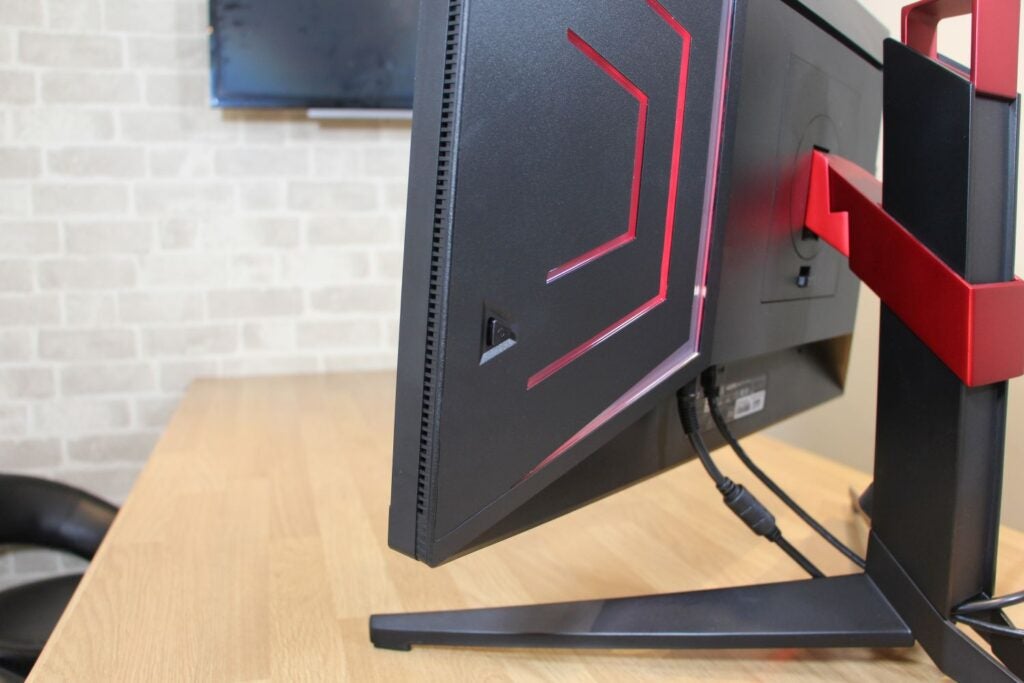
The 240Hz refresh rate works with AMD FreeSync and Nvidia G-Sync support. Combine that with the 1ms GtG response time and you’ve got the pace for most eSports situations. Only those at the bleeding edge of competition will want a 360Hz or 480Hz display.
The specification completes with 10-bit colour, and AOC says that this screen is VESA DisplayHDR 1000 certified thanks to a 1000-nit backlight and 576 dimming zones.
It’s an impressive array of stats. AOC sells a display with a similar name called the AGON AG274QXM that costs £684/€945, with US pricing still to come, but that screen has a lower refresh rate and brightness level. Don’t assume that higher-number models like the AG275QXL are better, either, because those often miss out on Mini LED tech, high refresh rates or ten-bit colour.
The $549/£549 Samsung Odyssey G7 runs at 2560 x 1440 and 240Hz and uses QLED, so it’ll still provide vibrant imagery. It’s curved but not as bright as the AOC and doesn’t have as many dimming zones, so its HDR isn’t as powerful. It loses out on Adobe RGB coverage and ports too.
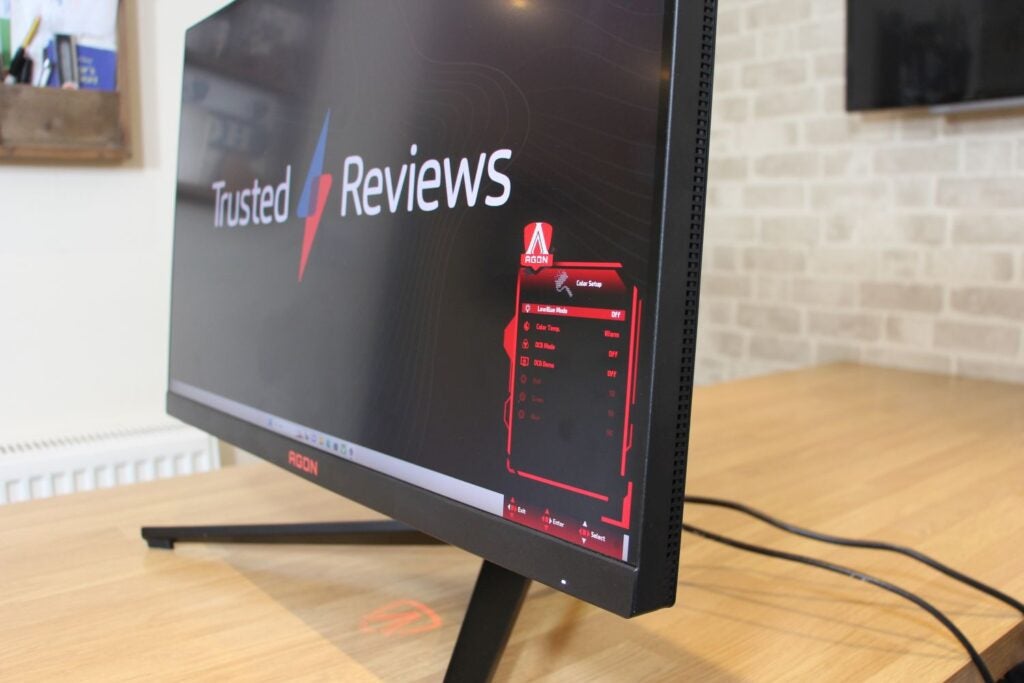
The MSI MPG Artymis 273CQRX-QD is affordable too, at $499/£549/€686, and it does match the AOC for resolution, refresh rate and response time – but it can’t compete for HDR ability or brightness because it’s only VA.
AOC packs its impressive hardware into a typically eye-catching chassis. At the front, there’s a band of RGB LED lighting beneath the screen and, around the back, you’ll find more customisable lighting.
At the base of the stand, there’s even a little RGB LED projector that beams the AOC and AGON logos onto your desk, but it’s not customisable so it’s redundant unless you’re really into the brand.
It’s a practical panel, too. It’s got 120mm of height adjustment and tilt, swivel and pivot movement alongside 100mm VESA mount support. The KVM switch allows multiple PC or device control from one set of peripherals and on the side it has a headphone hook.
The AOC has two HDMI 2.1 ports, a DisplayPort 1.4 connection, and four full-size USB 3.2 Gen 1 ports. It’s got a USB 3.2 Gen 2 Type-C port too, and it handles DP alt mode. It also provides 65W of power delivery, which is enough to charge everyday laptops but not gaming notebooks.
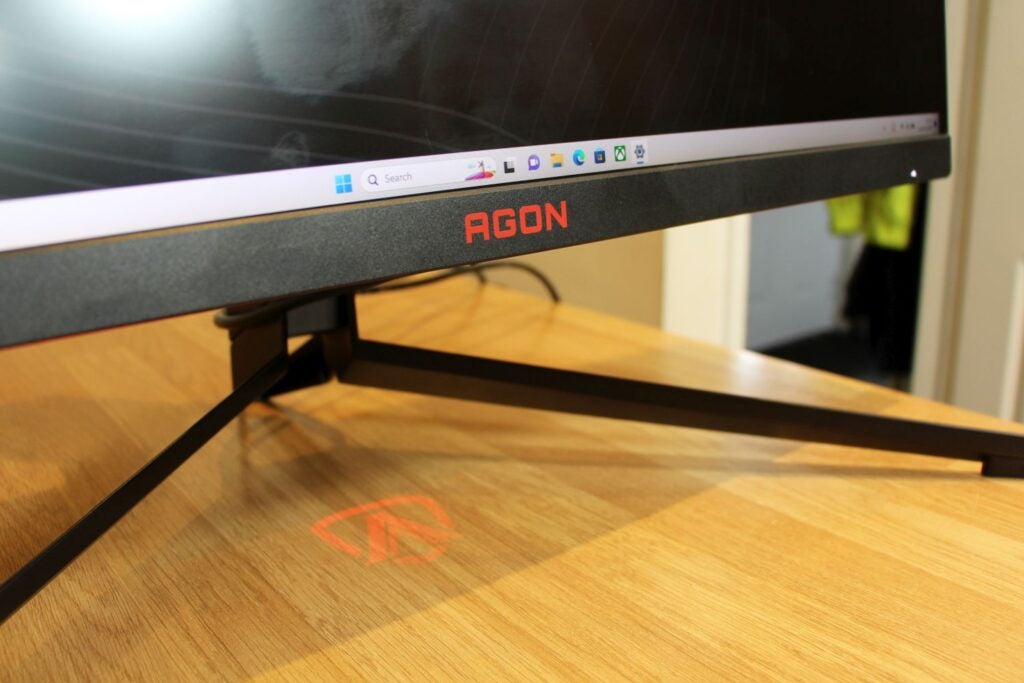
That’s a wrinkle, and I always prefer ports on the side of the display – the AOC houses them all around the rear, making them tricky to reach.
The AG274QZM comes with an AGON QuickSwitch, which allows users to change key monitor settings from the desktop. The display is also adjustable via a Windows app. Both are a boon because the on-screen menu is poor, with inconsistent UI rules and an annoying layout.
There are other areas where the AOC feels clunky. Physically, for instance: at 7.5kg in weight and with a base stretching 352mm from front to back, it’s a weighty unit that occupies lots of space. It’s got a huge external power brick, too. It’s no big issue that the display’s housing is plastic, there’s too much give in the rear considering the AOC’s price.
Don’t expect much from the pair of 5W speakers, either. They’re loud, but the sound is muddy and doesn’t have much bass. Use external units or a headset and you’ll have a much better time.
Image Quality
- Games look fantastic
- Motion is crisp and fast, ideal for eSports
- At this price, OLED alternatives are available
The AOC doesn’t get everything right on the outside, but it impresses in benchmarks. In SDR mode its peak brightness of 581 nits is huge, and in HDR mode that figure tops out at 1,014 nits – another fantastic result. Those scores mean the panel serves up bold imagery in any gaming or media situation.
Happily, those huge brightness results pair with impressive black points. In SDR mode, the panel hit 0.2 nits and its HDR point was nearly as impressive, which means contrast ratios of 2905:1 in SDR mode and 4,408:1 in HDR mode.
In real-world use that means you’ll get huge brightness in lighter areas, loads of depth and detail in darker areas and plenty of nuance in between.
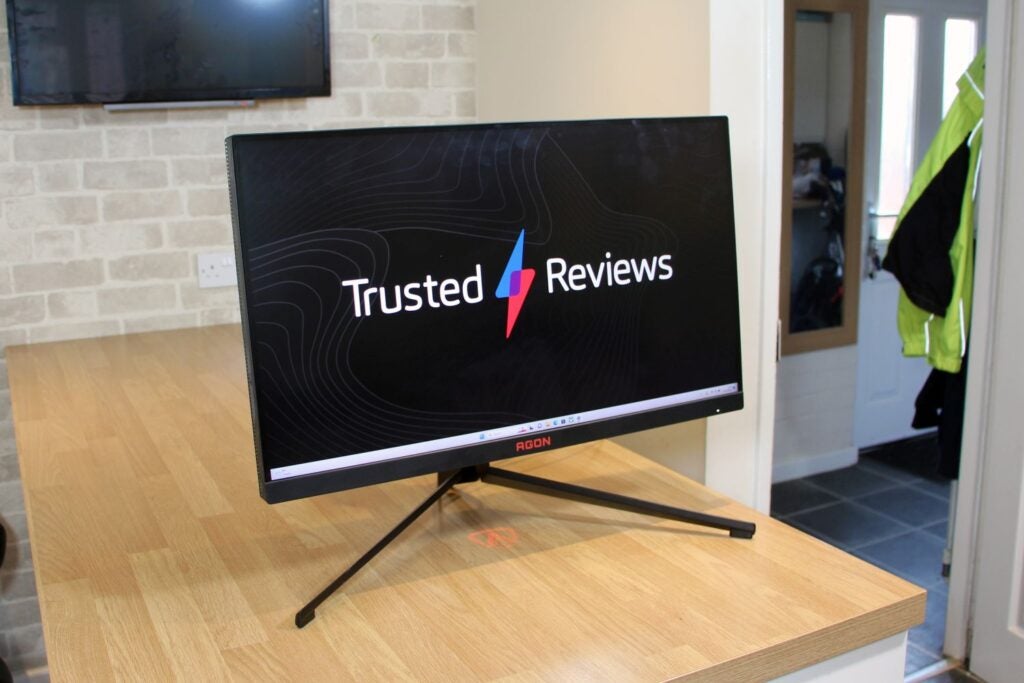
There’s no shortage of colour, either. AOC’s screen produced 99.8% of the sRGB gamut at 168.6% volume and 92.6% of the DCI-P3 space at 119.4%. it even churned out 99.2% of the Adobe RGB space at 116.2%, which is an excellent result for any gaming display. The Delta E of 1.98 is impressive too and means you won’t have any accuracy issues.
The real-world result is quite spectacular. Combine those coverage figures with the screen’s huge brightness, deep black points and high contrast and you’ve got the kind of vibrancy and energy that no IPS panel can replicate. Your PC and console games will look brilliant.
They’re going to look crisp, too, because the AOC’s motion performance is tremendous. The fastest shooters and eSports games remained smooth and sharp right up to 240fps. The AOC has Overdrive modes, but this screen is so well-calibrated that they have a minimal impact – you don’t have to delve into those menus.
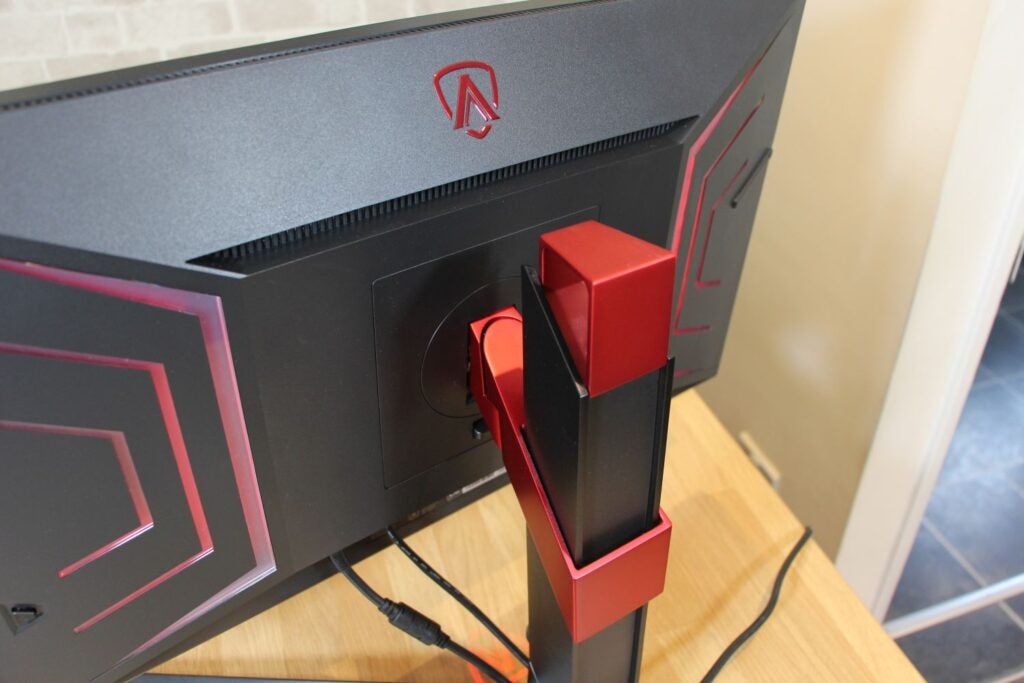
The Samsung Odyssey G7 falls behind in terms of image quality. The MSI uses Quantum Dot LEDs to match the AOC for contrast, but its colour performance and relatively weak brightness levels mean that screen can’t contend with the AOC for sheer vibrancy or HDR grunt.
There’s no doubt that the AOC’s Mini LED hardware delivers extra depth and nuance when compared to conventionally backlit IPS screens, but there is a little sting in the tail when it comes to HDR. The AOC has 576 dimming zones and delivers more nuance and detail than its more affordable rivals, but some high-end displays have twice as many zones, and OLED screens can produce HDR with backlighting from individual pixels.
I’m not saying that the AOC produces bad HDR. Far from it. Indeed, it’s one of the better gaming monitors around when it comes to delivering the brighter highlights and broader array of colours you expect from HDR. But you’ll occasionally see lighting zones adjusting and blooming, and that’s not an issue on even more expensive screens.
Still, that’s my only real issue when it comes to playing games or viewing media on this display – and it’s not that the AOC is bad. It’s just that OLED panels are even better.
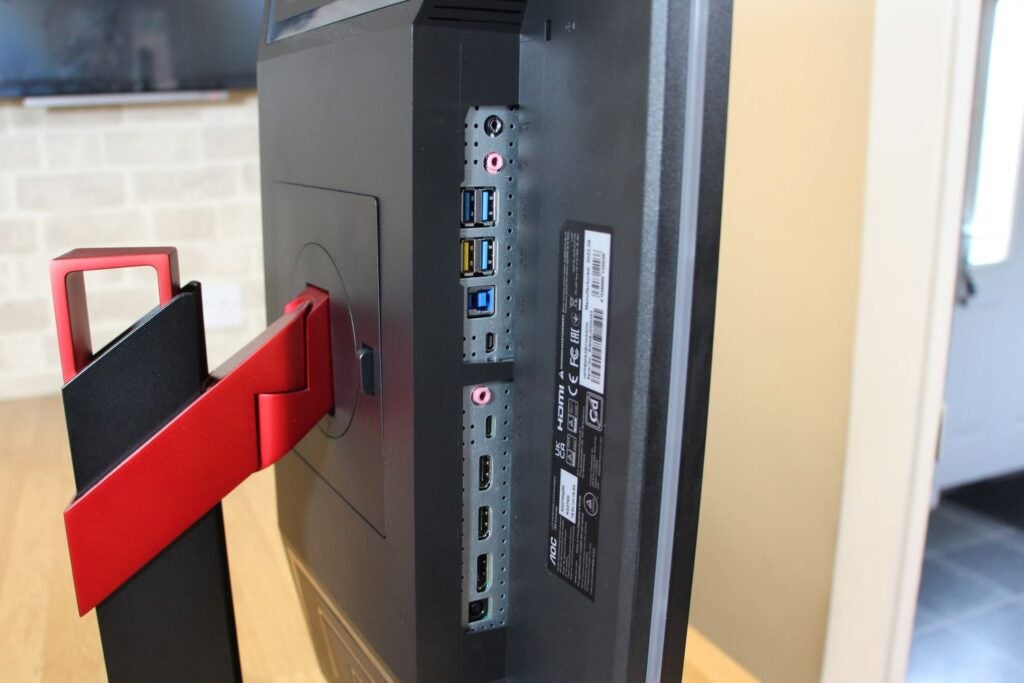
That would be more acceptable if the AOC was a bit cheaper, but its $1,099/£999/€1275 price brings it up against panels like the Asus ROG Swift PG27AQDM, which offers similar specifications alongside OLED internals for $999/£1099/€1499. It leaves the AOC in a tricky spot.
Latest deals
Should you buy it?
You want a Mini LED display to do it all – and don’t mind the price
There’s no denying the quality on offer from the AOC, and it’s packed with features. Games look fantastic here and will continue to do so for years in both SDR and HDR modes.
You’re not fussed about HDR or you want to make your money go further
If top-tier specs like HDR don’t bother you then you’ll get a great gaming experience with a more affordable screen. If they do, shell out for an OLED display instead.
Final Thoughts
There’s lots to like about the AOC AGON AG274QZM – games look bold and punchy, the movement is crisp and it’s packed with features. It’s undoubtedly an excellent screen.
If you want to save money, there are cheaper alternatives that still get the job done and, for this money, you could get an even better OLED display with the same core specifications. The likes of the $549/£549 Samsung Odyssey G7 and $499/£549/€686 MSI MPG Artymis 273CQRX-QD can’t match the AOC for features or image performance, but they’re perfectly serviceable gaming panels for most people.
At this price, OLED screens are just starting to appear and they’ll be even better. The AOC is a superb gaming monitor, but I’d wait for a price drop before taking the plunge.
How we test
We use every monitor we test for at least a week. During that time, we’ll check it for ease of use and put it through its paces by using it for both everyday tasks and more specialist, colour-sensitive work.
We also check its colours and image quality with a colorimeter to test its coverage and the display’s quality.
We used it as our main monitor for at least a week.
We used a colorimeter to get benchmark results.
We used our own expert judgement for image quality.
FAQs
AOC, the electronics company based out of Taiwan, stands for Admiral Overseas Corporation.
AGON is the gaming-focused sub-brand of electronics manufacturer AOC.


